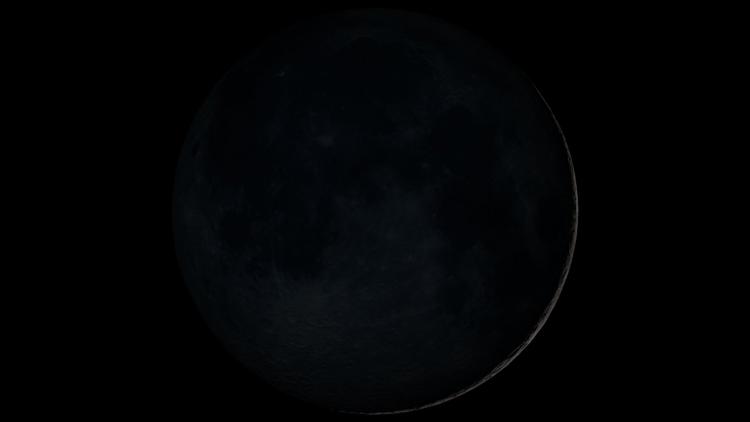
A monthly black moon only occurs about once every couple of years.
WASHINGTON — There will be a rare “black moon” on Dec. 30, but you’re likely not going to notice anything that unusual if you look to the sky on Monday.
Most people are familiar with blue moons, or at least the phrase “once in a blue moon.” Well, a black moon is the opposite of a blue moon.
While a blue moon represents the second full moon in a month, a black moon is the second new moon in a month. It can also mean the third new moon when there’s a season with four new moons (instead of the typical three).
The second new moon of Dec. 2024 occurs at 5:27 p.m. Eastern (22:27 Universal Time) on Dec. 30, according to the U.S. Naval Observatory.
A new moon is the “invisible phase” of the moon, with the illuminated side facing the sun and the night side facing Earth, according to NASA. The eight lunar phases, in order, are: new moon, waxing crescent, first quarter, waxing gibbous, full moon, waning gibbous, third quarter, and waning crescent. The cycle repeats once a month (every 29.5 days).
New moons are fairly common, seen approximately every four weeks, but a monthly black moon only occurs every 29 months. That means the next black moon, signifying the second new moon in a calendar month, won’t happen again until Aug. 31, 2027.
However, the other type of black moon – the third new moon in a season with four new moons – will occur on Aug. 23, 2025.
When is the next blue moon?
There also won’t be a blue moon in 2025. The next monthly blue moon doesn’t occur until May 31, 2026, according to Time and Date.
When is the next full moon?
The next full moon, which is the first of 2025, is on Jan. 13. It’s also known as the Wolf Moon because in some parts of the world wolves are active in January and howl on cold nights, EarthSky explains. Other names for January’s full moon reference the winter cold, such as the ice moon and the cold moon.



